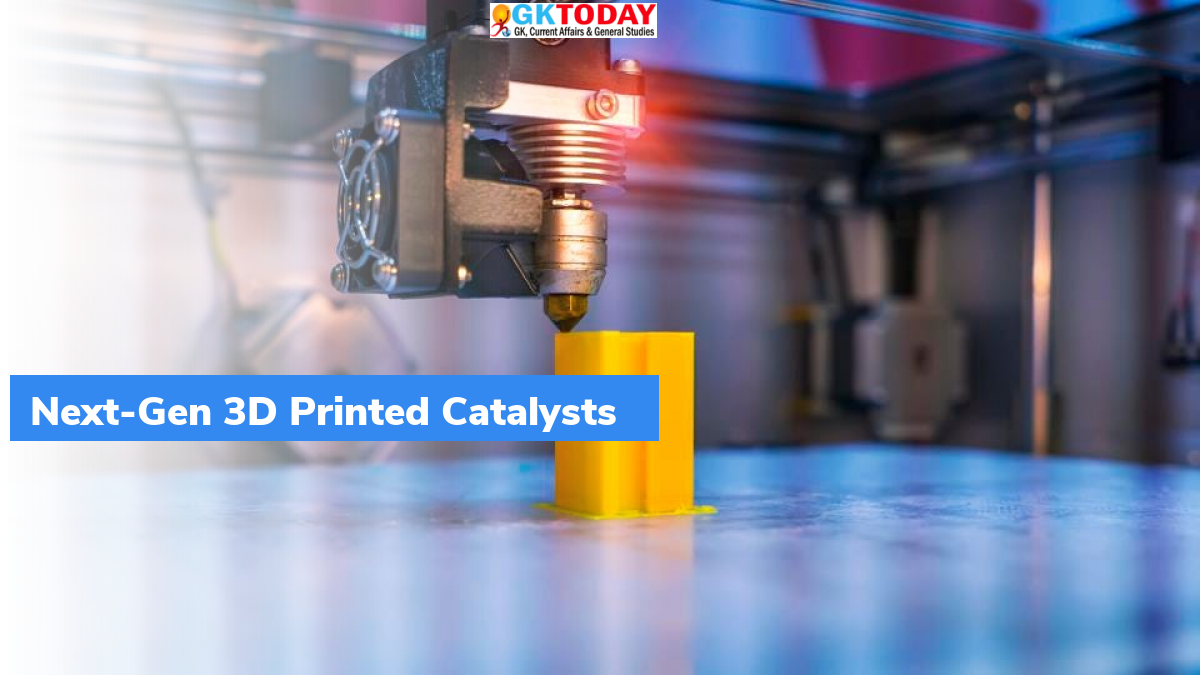Next-Gen 3D Printed Catalysts
Next-Gen 3D Printed Catalysts are developed by researchers at Royal Melbourne Institute of Technology (RMIT) University in Melbourne, Australia.
About the research
- The researchers claim that they solved the biggest challenge in the development of hypersonic aircraft i.e. controlling the enormous heat that builds up when aircraft fly at speeds more than five times the speed of sound (Mach 5).
- The lab demonstrations of the researchers from RMIT showed that the 3D printed catalysts can power the hypersonic flight, simultaneously cooling the system. Their research was published in the Royal Society of Chemistry journal.
- The 3D printed catalysts were made of metal alloys and were coated with zeolites, synthetic minerals. These 3D printed catalysts have high versatility, powerful, efficient, cost-effective to manufacture, and easy to scale.
Applications and uses
- Their main application of 3D Printed catalysts is solving the overheating challenge in hypersonic aircraft.
- Along with the aircraft sector, they provide a revolutionary solution to thermal management across many industries, where overheating is a biggest problem. They can also be used in air pollution control for vehicles and to improve indoor air quality, which became important to tackle respiratory viruses like COVID-19.
About 3D printing
3D printing is the construction of a three-dimensional object from a Computer-Aided Design (CAD) model. Using the software, the model is first developed by a computer, which then gives instructions to a 3D printer. In this process, parts are built layer by layer by depositing material such as plastic according to the digital 3D design data.
Month: Current Affairs - March, 2022
Category: Science & Technology Current Affairs








